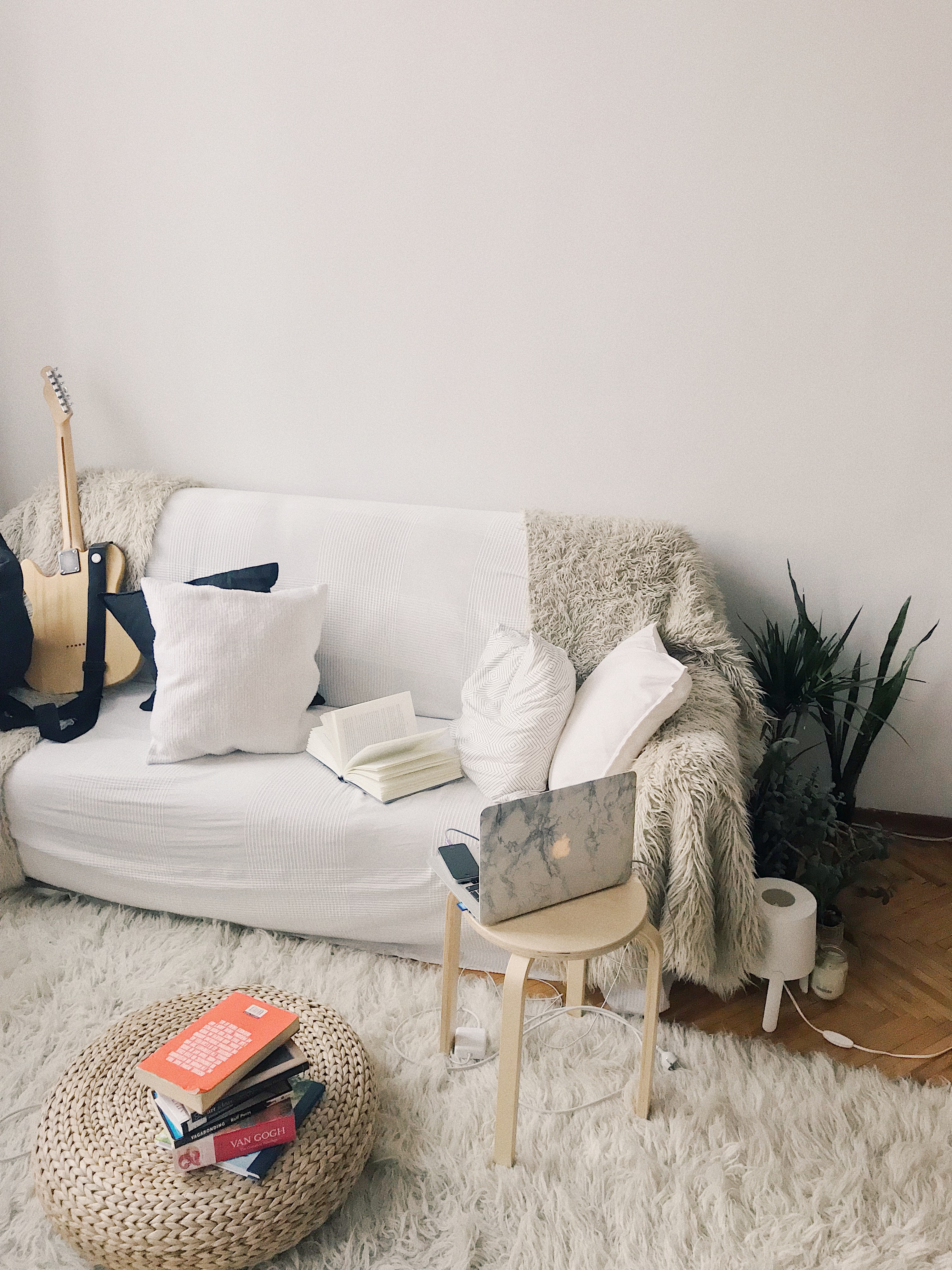Selecting the Perfect Area Rug
A well-chosen rug enhances your color scheme, in addition to absorbing sound in a hardwood room. You’re in luck if you pull up your green shag carpeting and uncover a hardwood treasure. But what do you do with those naked floors?
If your floor is in good shape, you may want to leave it uncovered. If you do so, it’s important to put stick-on felt pads on the feet of your chairs and place small, washable throw rugs at high traffic areas (under the kitchen sink, the front door, etc.) to increase the life of your floor.
If your newly revealed floor is in bad shape, you don’t
necessarily have to re-carpet or refinish the hardwood. There are several less
expensive options:
a) Install tile only in the high-traffic areas showing
damage, leaving the remainder of the hardwood intact.
b) Hire a hardwood repair
specialist to spot-replace and re-stain warped, burnt or gauged areas.
c) Lay area rugs over the damaged zones.
There are several advantages to using large area rugs on your hardwood flooring:
a) The room will feel warmer and look more “pulled together” when anchored by a rug.
b) Rugs help absorb the increased noise and echoes generated in a room with hardwood flooring.
c) A well-chosen floor covering enhances your color scheme and the decor of the room.
d) Your floors will be protected from scratches and wear.
Lay newspapers down on the floor and begin covering the area needing the carpet. Start small and keep laying down paper until you find what looks like the best coverage. Establish minimum and maximum acceptable sizes and jot this down. (Most rugs come in standard sizes but there are variations, so it helps to know the range of sizes that could work in the room.)
The rug should enhance the room’s decor by echoing its color scheme and style and should be an integral part of the overall design, not the focal point. Stand in the room needing the rug and make note of its one, two or three predominant colors. Then determine the room’s style or period (French Country, Modern, Early American, etc). Knowing the room’s colors and the style will help you narrow your choices. Decide on a solid versus a patterned rug, such as handmade area rugs, silk rugs, persian rugs, oriental rugs, wool rugs etc.
Solid colored rugs calm the eye, but show spots and lint more easily. A patterned rug adds visual interest and hides soil well, but finding one to match your existing furnishings may be a challenge.
Next, determine your budget.
Once you know your budget, your colors and your style, you’re ready to hunt down the rug of your dreams. Many retail furniture stores also carry area rugs that you can take home and try out. Try to save money by purchasing your rug during a sale.
Inexpensive Alternatives
– Recycle your old wall-to-wall
carpeting. Lay out the carpeting on your driveway and determine what section of
the rug could be re- used. Use masking tape to outline the area you want cut
and trimmed. Take the carpet to a carpet company willing to do the lacing and –
voila – a “new” area rug for the cost of the stitching!
– Try garage or estate
sales. You can find new, antique or imported rugs at a flea
markets, often at a good price.
– Furniture consignment shops sometimes carry
high-quality used carpets at a fraction of the new cost.





Comments
Post a Comment